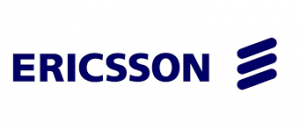Ericsson 5G Radio Dot gives big boost to indoor coverage

Daryl Schoolar of Ovum
With mobile data traffic surging by eight times and 1 billion 5G subscriptions expected by the end of 2023, mobile operators must meet consumer and enterprise demand for applications such as 4K/8K video streaming, virtual reality/augmented reality, and immersive media.
This puts out a strong call for indoor coverage, which cannot be easily addressed by outdoor radio deployments as modern building materials can block outdoor radio signals.
Ericsson is meeting this challenge by introducing the 5G Radio Dot, a small cell radio designed to satisfy the advanced indoor mobile broadband performance requirements demanded by 5G.
Building on the elegant design of previous generations, the 5G Radio Dot takes less than half the time to install compared to other indoor solutions, and will support the new 5G mid-bands (3-6GHz) with speeds up to 2Gbps.
Nishant Batra, head of product area network infrastructure at Ericsson, says: “Adding small cell solutions to our 5G portfolio is a natural part of the network evolution. Enterprises have been asking for first-rate connectivity indoors, as well as higher speeds and capacity to serve advanced use cases that cannot be addressed by traditional indoor systems. Our 5G portfolio, bolstered by small cells, will enable operators to meet these demands.”
Daryl Schoolar, practice leader, Ovum, says: “Now that first 5G standards are here, vendors are going to need multiple radio solutions to help operators roll out their new 5G networks. Ericsson takes an important initial step in this direction by adding indoor small cell 5G solutions to its already existing outdoor 5G RAN portfolio.”
“This new indoor solution from Ericsson is going to be attractive for operators wanting to offer enterprises good indoor performance for enhanced mobile broadband and new industrial applications that can’t be met by Wi-Fi or 5G base stations deployed outdoors.”
Huang Yuhong, deputy head of China Mobile Research Institute, says: “The Ericsson Radio Dot System is already widely deployed in our 4G networks. As an innovative small cell solution, it further enhances our indoor solutions and will continue to play a key role in the 5G era. We’re happy to see Ericsson evolving the Radio Dot to 5G technology.”

As a natural evolution of the Ericsson Radio Dot System, operators will be able to deploy 5G Radio Dot next to 4G solutions using the same cabling infrastructure, same network architecture and dot locations. This innovative small cell solution provides a simple upgrade path for existing Radio Dot System deployments, adding 5G technology capabilities. It is easy to add frequency, capacity, and technologies.
Feng Yi, director of Wireless Technology Department, China Unicom Network Technology Research Institute, says: “Our users enjoy excellent indoor coverage in thousands of buildings in China, including shopping malls, thanks to Ericsson Radio Dot solution. As a scalable system, it enables us to meet the growing demand for seamless indoor connectivity. It is great to see Ericsson evolve the solution to 5G as we prepare for the next-generation mobile technology.”
The Radio Dot System has been successfully deployed for many indoor applications used in large areas such as office buildings, shopping malls, hospitals, and airports. Over time, the small cell solution will also support 5G industrial applications from connected factories to more extreme cases such as connected mining.
Ericsson is a pioneer on this front. Its collaboration with Boliden shows how Radio Dot technology can improve safety and efficiency through the remote control of machines that keep people out of the most dangerous areas of the mine at the most dangerous times.
The 5G Radio Dot will undergo trials in late 2018 and will be commercially available in 2019.
Comment on this article below or via Twitter @IoTGN
